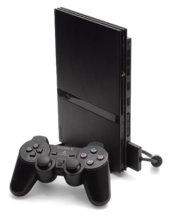In 2012, Sony announced that it will acquire all shares of So-net Entertainment Corporation, which is the majority shareholder of M3, Inc., an operator of portal sites (m3.com, MR-kun, MDLinx and MEDI:GATE) for healthcare professionals.
On 28 September 2012, Olympus and Sony announced that the two companies will establish a joint venture to develop new surgical endoscopes with 4K resolution (or higher) and 3D capability.[41] Sony Olympus Medical Solutions Inc. (Sony 51%, Olympus 49%) was established on 16 April 2013.[42]
On 28 February 2014, Sony, M3 and Illumina established a joint venture called P5, Inc. to provide a genome analysis service for research institutions and enterprises in Japan.[43]
Sony Mobile Communications
Main article: Sony Mobile
Sony Mobile Communications Inc. (formerly Sony Ericsson) is a multinational mobile phone manufacturing company headquartered in Tokyo, Japan and a wholly owned subsidiary of Sony Corporation.In 2001, Sony entered into a joint venture with Swedish telecommunications company Ericsson, forming Sony Ericsson.[44] Initial sales were rocky, and the company posted losses in 2001 and 2002. However, SMC reached a profit in 2003. Sony Ericsson distinguished itself with multimedia-capable mobile phones, which included features such as cameras. These were unusual for the time. Despite their innovations, SMC faced intense competition from Apple's iPhone, released in 2007. From 2008 to 2010, amid a global recession, SMC slashed its workforce by several thousand. Sony acquired Ericsson's share of the venture in 2012 for over US$1 billion.[44] In 2009, SMC was the fourth-largest mobile phone manufacturer in the world (after Nokia, Samsung and LG).[45] By 2010, its market share had fallen to sixth place.[46] Sony Mobile Communications now focuses exclusively on the smartphone market under the Xperia name. In 2015, Sony released Xperia Z5 Premium in Canada following US and Europe.[47]
In the year 2013, Sony contributed to two percent of the mobile phone market with 37 million mobile phones sold.[48]
Sony Interactive Entertainment
Main article: Sony Interactive Entertainment
The PlayStation 2 is the best-selling video game console of all time.
Launched in 1994, the first PlayStation gained 61% of global console sales and broke Nintendo's long-standing lead in the market.[49] Sony followed up with the PlayStation 2 in 2000, which was even more successful. The console has become the most successful of all time, selling over 150 million units as of 2011. Sony released the PlayStation 3, a high-definition console, in 2006. It was the first console to use the Blu-ray format, although its expensive[21] Cell processor made it considerably more expensive than competitors Xbox 360 and Wii. Early on, poor sales performance resulted in significant losses for the company, pushing it to sell the console at a loss.[50] The PlayStation 3 sold generally more poorly than its competitors in the early years of its release but managed to overtake the Xbox 360 in global sales later on.[51] It later introduced the PlayStation Move, an accessory that allows players to control video games using motion gestures.
Sony extended the brand to the portable games market in 2005 with the PlayStation Portable (PSP). The console has sold reasonably, but has taken a second place to a rival handheld, the Nintendo DS. Sony developed the Universal Media Disc (UMD) optical disc medium for use on the PlayStation Portable. Early on, the format was used for movies, but it has since lost major studio support. Sony released a disc-less version of its PlayStation Portable, the PSP Go. The company went on to release its second portable video game system, PlayStation Vita, in 2011 and 2012. Sony launched its fourth console, the PlayStation 4, on 15 November 2013, which as of 3 January 2016 has sold 35.9 million units.[52]
On 18 March 2014, at GDC, President of Sony Computer Entertainment Worldwide Studios Shuhei Yoshida announced their new virtual reality technology dubbed Project Morpheus, and later named PlayStation VR, for PlayStation 4. The headset brought VR gaming and non-gaming software to the company's console. According to a report released by Houston-based patent consulting firm LexInnova in May 2015, Sony is leading the virtual reality patent race. According to the firm’s analysis of nearly 12,000 patents or patent applications, Sony has 366 virtual reality patents or patent applications.[53] PlayStation VR was released worldwide on 13 October 2016.[54]
Sony Creative Software
Catalyst Browse and Catalyst Production Suite are consumer software for professional broadcast and production applications.Electric vehicles and batteries
See also: Electric vehicle
In 2014, Sony participated within NRG Energy eVgo Ready for Electric Vehicle (REV) program, for EV charging parking lots.[55]Sony is in the business of electric vehicle lithium-ion batteries.[56][57][58]
IT giants such as Google (driverless car) and Apple (iCar/Project Titan) are working on electric vehicles and self driving cars, competing with Tesla; Sony is entering into this field by investing $842,000 in the ZMP company.[59][60]
On July 28, 2016, Sony announced that the company will sell its battery business to Murata Manufacturing.[61]

No comments:
Post a Comment